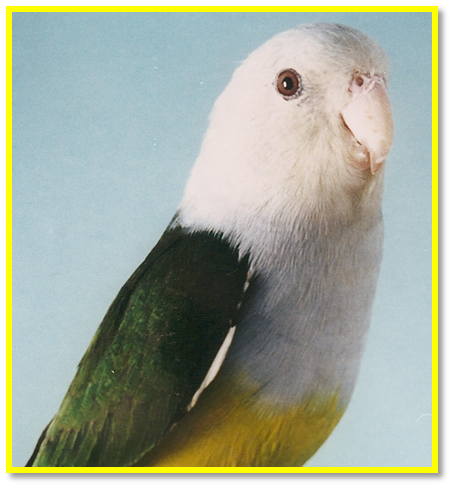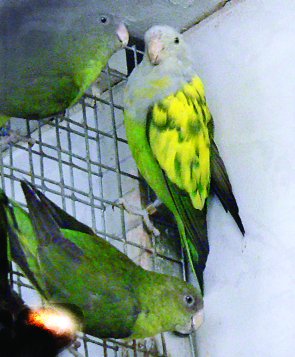 Agapornis
Canus
Agapornis
Canus Agapornis
Canus
Agapornis
Canus
By Didier Mervilde
The Grey-headed Lovebird or Madagascar Lovebird (Agapornis cana) is a small species of the lovebird genus. It is a mainly green parrot. The species is sexually dimorphic and only the adult male has gray on its upper body. They are native on the island of Madagascar and are the only lovebird species which are not native on the African continent. They are the smallest of the lovebird species. They are difficult to breed in captivity.
The Grey-headed Lovebird is one of the smallest species of the lovebird genus, being 13 cm (5 inches) long and weighing about 30–36 grams.
The adult female is entirely green, with a dark green back and wings, a bright green rump, and a paler green chest; the adult male are similarly colored, except that their entire head and upper chest are a pale grey.
In the A.c.ablectanea both adults in general darker blue/green with less green/yellow. Head and breast of male deeper and more purple grey
There are two species * Agapornis c canus, Madagaskar exept southwestern, introduced on Seychelles, Rodrigues,Reunion and Comoro Islands.
* Agapornis c ablectanea, SW Madagaskar
They are found in wooded areas
Grey-headed Lovebirds were first imported for European aviculture in the second half of the nineteenth century
It is not a bird for the beginner breeder because it is not easy to breed with them. In the wild the birds nests in tree cavities.
In captivity they can be kept in cages and in flights.
In captivity they prefer a nestbox type “budgerigar” size 24 cm x 15cm x 15 cm . The clutch Size is 5-7 eggs.
At the bottom of the nest we put some peat, bay leaves and willow branches. Not all Cana’s seems to use nesting material in captivity but love it to gnau on willow branches.
The best breeding is to use breeding cages measuring 100 cm x 80 cm x 80 cm and only per pair.
The diet is a small seed mix with a lot of canary seed and millets. They also love fruit such as apple.
For the moment there is only one mutation probably “ pallid “ but in the future there are many opportunities. Research told us that it is possible to breed blue cana’s with a violet head and even yellow cana ‘s.
Our challenge is to breed these birds so that we no longer required wild-caught

Is this the first pied Agapornis canus ?
Published by Mr.Petr Podpera - Czech
Published in 2010 Copyright Petr Podpera